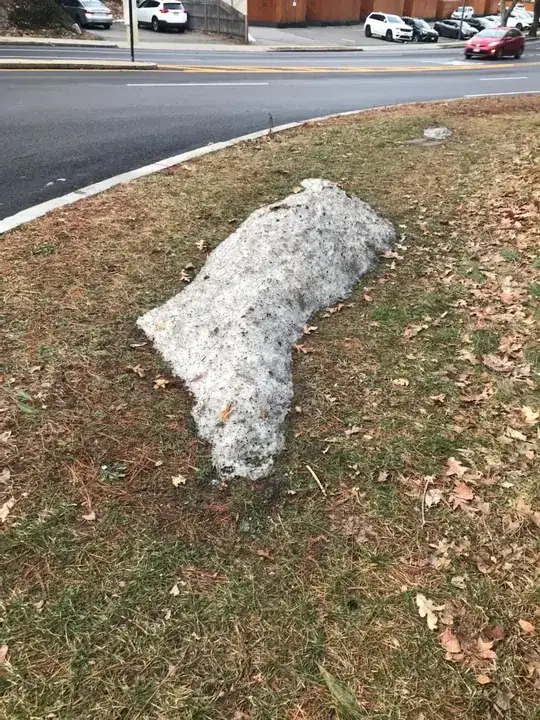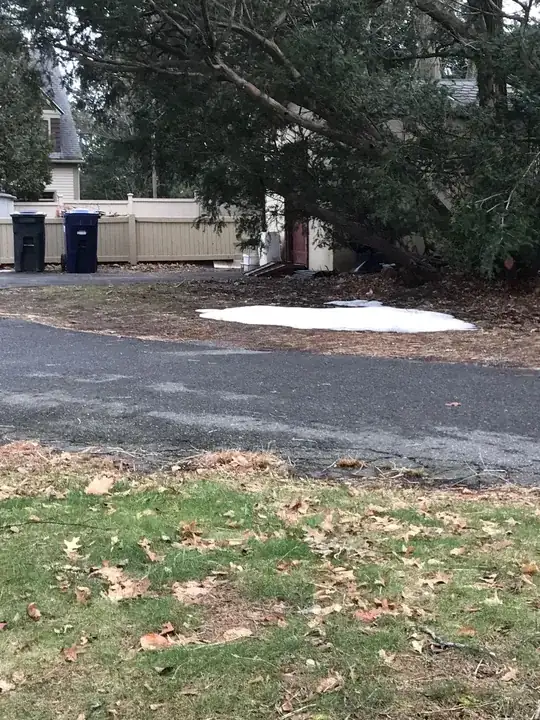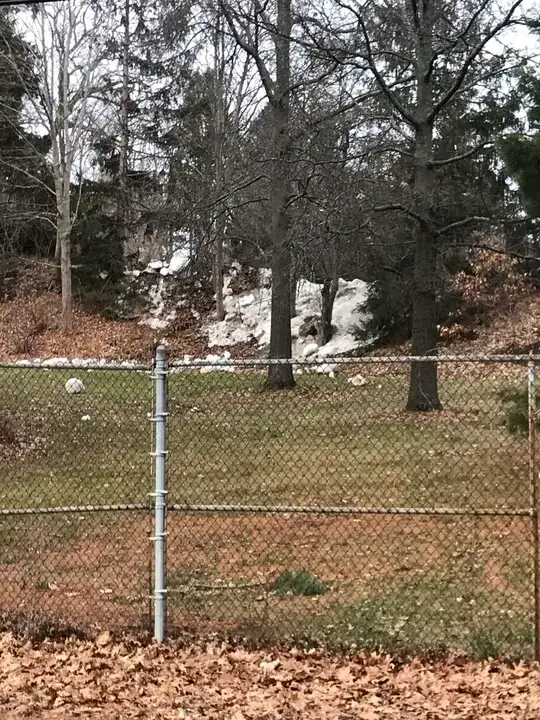I often notice small patches of snow that remain on the ground in seemingly random locations, many days or even weeks after all other snow in an area has melted, and even when temperatures have been well above freezing for some time. What makes these particular patches of snow so resistant to melting and how do they "choose" to remain in one spot and not another seemingly identical spot nearby?
More detail about my question:
I'm not asking why snow takes a long time to melt in general (I've seen this). I'm asking how it's possible that the conditions would be sufficient to cause almost all snow to melt, but yet a few random patches (the "survivors") are able to escape the fate of the other snow for so long.
These are some possibilities that come to mind:
Maybe the snow has been melting at a steady pace since the last snowfall and I'm just witnessing the end of that process (i.e. yesterday there was more snow on the ground, now there only are a few patches that I'm seeing, and tomorrow there will be none). But this doesn't match my admittedly nonscientific observation of the phenomenon. I've seen it happen that most of the snow will melt in a short time, perhaps a day or two after the last snowfall, except for a few patches that get "stuck." These patches remain in the same state (not melting further) over a much longer timespan. I've been startled by these lingering snow patches even when the weather has gotten warm enough that I'm no longer wearing my winter jacket.
Maybe the lingering snow is in a shady spot. But no, it's not always in a shady spot.
Maybe the lingering snow is in a wind shadow. But often I can't see any obstacles or other features on the ground that would create a wind shadow in that one spot.
Maybe there's something underneath the snow that makes that portion of the ground especially cold. Do ground temperatures really differ so much on a foot to foot basis?
Maybe there was a rapid melting event several days or weeks ago, but temperatures dropped before the melting finished. With subsequent freezes, the few lingering patches of snow became denser and more resistant to melting? So the remaining snow now has a different consistency and it won't melt even in the same conditions that melted the rest of the snow?
[Added in response to comment from rob.] Maybe the lingering snow is from a large pile (for example, a pile made by a snow plow). Quite possible, but I've definitely seen this phenomenon in the woods and other places where there are no plows or other reasons for a disproportionately large pile to form. And while I'd expect that a large snow pile would last longer than a thin layer of snow, it seems counter-intuitive that a three or four foot pile could last for weeks in conditions that have been sufficient to melt all the other snow (not saying it's impossible, just that I find it counter-intuitive).
These are a few examples spotted in the Boston area on Jan 15, 2021. They are not representative of all cases, they're just the images I have available now. Boston had some light snow on Jan 5. There's been sun and rain since then, temps have reached the low 40s, and most of the ground has been clear for days. The question about these snow patches: why there? And why not a foot to the left, or a foot to the right?
Added Jan 18, 2021: Here is an example of lingering snow patches at the Agassiz Rock site in Manchester-by-the-Sea, MA. I hiked for several hours there today and saw no snow anywhere until I suddenly encountered these few patches. They are on the north side of a hill, on a leafy surface, and likely have good protection from sun and wind. But there's plenty of other leafy ground on north side of the hill where snow would presumably experience the same favorable conditions. So it strikes me as odd that there aren't patches of snow scattered around the area; instead, everything has melted except these few survivors in the picture. Why not them too? The ground is not wet in a way that would suggest that all the other snow had just recently melted. One could speculate that these patches are remnants of a large pile, but there are no plows here; if a large pile formed naturally in this spot, one might expect that the same conditions that formed it would have formed at least a few other piles at the same time, with their own lingering patches, but there are no other lingering patches to be seen.



